|
Kingdom
of Lithuania Lietuvos Karalystė The Kingdom of Lithuania was a short lived constitutional monarchy
created towards the end of the First World War when Lithuania was under German occupation. The Council of Lithuania had declared
Lithuania's independence of February 16, 1918. Germany recognised Lithuania's independence on March 23, 1918. Four Months
later on July 4, 1918 the Council of Lithuania voted to offer the throne to the German noble Duke Wilhelm of Urach although
this was a controversial decision with many members leaving in protest. Duke Wilhelm accepted the offer on July 13, 1918 and
took the name Mindaugas II. On November 2, 1918 the council changed the constitution replacing it with a republican one thereby
ending the short reign of King Mindaugas II. Candidates for the Crown of Lithuania The military command of Ober Ost petitioned Wilhelm II, Emperor of Germany and King of Prussia,
to "take Grand Ducal crown for yourself." This would have created a personal union between Lithuania and Prussia.
An alternative proposal called for the election of Wilhelm's youngest son Prince Joachim of Prussia. Such plans for expansion
of already dominant Protestant Prussia were opposed by the Catholic Kingdom of Saxony and Kingdom of Bavaria. Saxony promoted
Friedrich Christian, second son of Frederick Augustus III of Saxony. This proposal was a reminder of historical ties between
Saxony and Lithuania: the House of Wettin had produced three rulers for the Polish-Lithuanian Commonwealth between 1697 and
1763. A number of other candidates were also considered. Such plans were viewed by the Lithuanians as a threat to their independence.
The threat became more pressing after a meeting of German officials on May 19, where conventions governing the "firm
and permanent alliance" were discussed leaving very little autonomy for the Lithuanians.  An
idea was advanced to create a constitutional monarchy and invite a candidate who would fight to preserve Lithuanian independence.
The Presidium of the Council of Lithuania voted confidentially on June 4, 1918 to establish a hereditary monarchy and to invite
Duke Wilhelm of Urach. Duke William was suggested by Matthias Erzberger, who had worked with Lithuanians in Switzerland. His
candidacy had been discussed at least since March 1918. Duke William seemed to be a perfect candidate as he was a Catholic,
was not in line of succession to the Kingdom of Württemberg due to his grandfather's morganatic marriage, was not closely
related to the House of Hohenzollern, and had no ties to Poland.Due to obstacles posed by the German military, the Lithuanian
delegation to see Duke William in Freiburg im Breisgau was delayed until July 1. Duke William and his oldest son (as heir
apparent) accepted the offer without conditions. On July 11, the Council of Lithuania voted (13 for, 5 against, and 2 abstentions)
to officially establish the monarchy. On August 12, the Council sent a formal invitation to Duke William to become King Mindaugas
II of Lithuania  H.M. King Mindaugas II of Lithuania Mindaugas II of Lithuania (born Prince William of Urach, Count of Württemberg; May
30, 1864 - March 24, 1928) was elected King of Lithuania, on July 11, 1918. He never assumed the crown, as German authorities
declared the election invalid and the invitation was withdrawn in November 1918. Born as HSH Prince Wilhelm Karl Florestan Gero Crescentius of Urach, Count of Württemberg, he was the elder son of Wilhelm, 1st Duke of Urach
(the head of a morganatic branch of the Royal House
of Württemberg), and his second wife, Princess Florestine of Monaco, occasional
acting Regent of Monaco (daughter of Prince Florestan I of Monaco). 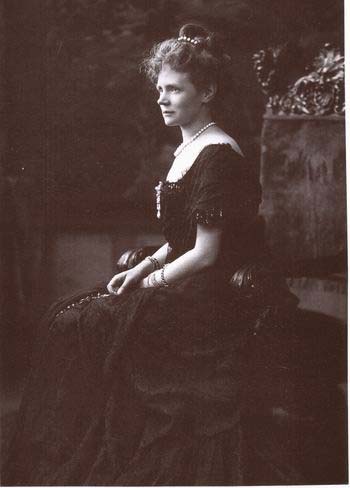 At the age of four Wilhelm succeeded his father as Duke of Urach. He was born and spent much of his childhood in Monaco, where his mother Florestine often
managed the government while her nephew, Prince Albert I of Monaco, went on long oceanographic explorations. Wilhelm was
culturally francophone. On June 4, 1918 the Council of
Lithuania voted to invite Wilhelm to become the king
of a newly independent Lithuania. Wilhelm agreed and was elected on July 11, 1918, taking the name Mindaugas II. According
to Wilhelm's agreement with the Council of Lithuania he had to live in Lithuania and speak its language. 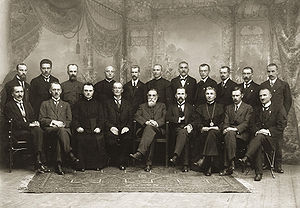
From
the beginning Wilhelm's reign was controversial. The four socialists of the twenty members of the Council of Lithuania left
in protest. The German government did not recognize Wilhelm's selection as king, though the influential Mattias Erzberger
supported the claim, being also a Catholic and from Württemberg. Wilhelm never had the chance to visit Lithuania, remaining
instead at Lichtenstein Castle his home south of Stuttgart; however he started to learn the Lithuanian language. Within a
few months of his election, it became clear that Germany would lose World War I, and on November 2, 1918, the Council of Lithuania
reversed its decision. 
In the
tiny chapel of Lichtenstein Castle is a framed letter from Pope Benedict XV welcoming Wilhelm's selection as the future king
of Lithuania. Wilhelm was married twice. In 1892, he married Duchess Amalie in Bavaria (1865-1912), daughter of Karl-Theodor,
Duke in Bavaria, a niece of Empress Elisabeth of Austria,and a direct descendant of the Lithuanian princess Louise Caroline
Radvila of Biržai. 
The nine children
were born of this marriage: * Princess Marie Gabriele
of Urach (1893-1908) * Princess Elisabeth of Urach (1894-1962) who married Prince Karl of Liechtenstein (1878-1955), an uncle of Franz Joseph
II of Liechtenstein, and had issue. * Princess Karola of Urach (1896-1980) * Prince Wilhelm of Urach (1897-1957), who morganatically
married Elisabeth Theurer (1899-1988) and had two daughters, Elisabeth and Marie Christine, neither of whom married. * Karl Gero, Duke of Urach (1899-1981), 3rd Duke, who married Countess Gabriele of Waldburg
of Zeil and Trauchburg (1910-2005). No issue. * Princess Margarete of Urach (1901-1975) * Prince Albrecht of Urach (1903-1969). Married
first Rosemary Blackadder and second Ute Waldschmidt. Divorced both of them and had issue by both. His daughter Marie-Gabrielle
(aka Mariga) was the first wife of Desmond Guinness. A diplomat and artist turned journalist and expert on the Far East. His
marriages were also considered morganatic but his descendants can claim titles that pass in the eldest female line. * Prince Eberhard of Urach
(1907-1969), who married Princess Iniga of Thurn and Taxis (1925-2008) and had issue; including Karl Anselm and Wilhelm Albert
the current and 5th Duke of Urach. While a notional pretender to the crown of Lithuania, he has not made a formal public claim.
Eberhard's descendants inherit the dukedom on the basis of the Salic law principle of Agnatic primogeniture * Princess Mechtilde of Urach
(1912-2001), who married Friedrich Karl, Prince of Hohenlohe-Waldenburg-Schillingsfürst and had issue. Though Wilhelm's first wife
had died in 1912, two of her ancestors had been elected to rule the Polish-Lithuanian Commonwealth in the 1700s; August III
the Saxon and Stanisław Leszczyński. This may have been a contributory factor in his election as king of Lithuania. 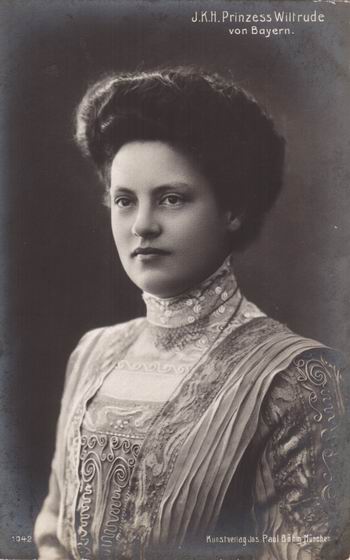
In 1924,
Wilhelm married Princess Wiltrud of Bavaria (1884-1975), daughter of King Ludwig III of Bavaria. This marriage was childless. The Genealogy of the Royal House 3b) Friedrich Wilhelm Alexander Ferdinand Gf von Württemberg,
cr Duke von Urach (Serene Highness) 28 May 1867 (Stuttgart 6 Jul 1810-Schloß Lichtenstein 17 Jul 1869); m.1st Munich
8 Feb 1841 Theodelinda de Beauharnais, Dss von Leuchtenberg (Mantua 13 Apr 1814-Stuttgart 1 Apr 1857); m.2d Monaco 15 Feb
1863 Florentine Pss of Monaco (Fontenay 2 Oct 1833-Stuttgart 24 Apr 1897); his issue bore the title Prince or Princess von
Urach, Graf or Gräfin von Württemberg together with the formal appellation of His or Her Serene Highness. 1c) Auguste Eugenie Wilhelmine Marie Pauline Friederike Pss von Urach (Stuttgart 27 Dec
1842-Schwaz, nr Innsbruck 11 Mar 1916); m.1st Schloß Lichtenstein 4 Oct 1865 Parzifal Gf von Enzenberg zum Freyen und
Jöchelsthurn (Innsbruck 25 Aug 1835-Schwaz 1 Jan 1874); m.2d Innsbruck 16 Jun 1877 Franz Gf von Thun und Hohenstein (Choltic
27 Jul 1826-Schwaz 30 Jul 1888)
2c) Marie Josephine Friederike Eugenie Wilhelmine Theodelinde Pss von Urach (10
Oct 1844-Monaco 13 Jan 1864)
3c) Eugenie Amalie Auguste Wilhelmine Theodelinde Pss von Urach (Stuttgart 13 Sep
1848-Stuttgart 26 Nov 1867)
4c) Mathilde Auguste Pauline Wilhelmine Theodelinde Pss von Urach (Stuttgart 14 Jan
1854-Bad Möders 13 Jul 1907); m.Monaco 2 Feb 1874 Pr Paolo Altieri, Pr di Viano (Rome 17 Nov 1849-Rome 4 Jan 1901) 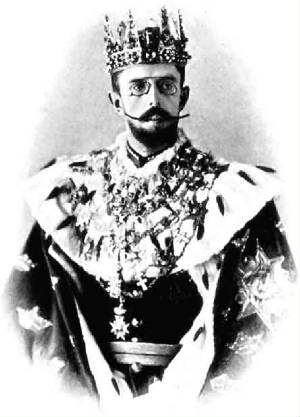 5c) Wilhelm Karl Florestan Gero Crescentius, Duke von Urach
was elected King of Lithuania with the regnal name Mindaugas II on 11 July 1918 (Monaco 3 Mar 1864-Rapallo 24 Mar 1928);
m.1st Tegernsee 4 Jul 1892 Amelie Dss in Bavaria (Munich 24 Dec 1865-Stuttgart 26 May 1912); m.2d Munich 26 Nov 1924 Wiltrud
Pss of Bavaria (Munich 10 Nov 1884-Oberstdorf 28 Mar 1975) 1d) Marie Gabriele Carola Josepha Sophie Mathilde Pss von
Urach (Stuttgart 22 Jun 1893-Stuttgart 19 Mar 1908)
2d) Elisabeth Florestine Auguste Marie Luise Pss von Urach
(Schloß Lichtenstein 23 Aug 1894-Frauenthal 13 Oct 1962); m.Tegernsee 5 Apr 1921 Karl Pr von und zu Liechtenstein (Frauenthal,
Styria 16 Sep 1878-Frauenthal 20 Jun 1955)
3d) Karola Hilda Elisabeth Maria (Stuttgart 6 Jun 1896-Tübingen-Lustnau 26 Mar 1980)
4d) Wilhelm Albert
Karl Anton Paul Gero Maria Pr von Urach, renounced the Ducal title and took the name "Graf von Württemberg"(Stuttgart
27 Sep 1897-Munich 8 Aug 1957); m.Stuttgart 19 Jun 1928 Elisabeth Theurer (Stuttgart-Feuerbach 20 Nov 1899-Stuttgart 20 Jun
1988)
1e) Elisabeth Amelie Hedwig Maria Mechthilde Pss von Urach (Stuttgart 2 Jan 1932-Stuttgart 12 Nov 1999)
2e) Marie Christine Gabriele Antonie Irmgard Pss von Urach (Stuttgart 18 Apr 1933-Stuttgart 2 Sep 1990)
5d) Karl Gero Albrecht
Joseph Wilhelm Anton Maria, Duke von Urach (Lichtenstein 19 Aug 1899-Lichtenstein 15 Aug 1981); m.Zeil 20 Jun 1940 Gabriele
Gfn von Waldburg zu Zeil und Trauchburg (Zeil 26 Apr 1910-6 Apr 2005) 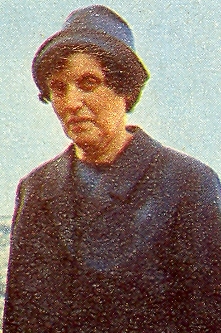
6d) Margarethe Sophie Florestine Maria Josepha (Lichtenstein
4 Sep 1901-Tübingen-Lustnau 28 Jan 1975) 
7d) Albrecht Eberhard Karl Gero Maria Pr von Urach (Hanau 8 Oct
1903-Stuttgart 11 Dec 1969); m.1st Oslo 1 Jun 1931 (div 1943) Rosemary Blackadder (Giessen 20 Jan 1901-Edinburgh 6 Jun 1975);
m.2d Berwang, Tyrol 8 Sep 1943 (div 1960) Ute Waldschmidt (Munich 11 Sep 1922-Stuttgart 25 Apr 1984) 1e) Marie Gabriele Sophie José Elisabeth Albertine
Almeria Pss von Urach (London 21 Sep 1933-Holyhead 7 May 1989); m.Oxford 3 Jul 1954 (div 1981) Hon Desmond Guinness (b.8 Sep
1932)
2e) Axel Peter Johannes Karl Alexander Pr von Urach (Bern 5 Jul 1944-Stuttgart-Degerloch 5 Jul 1977)
3e) Manuela Ilse Maria Thea Pss von Urach (b.Bern 8 Aug 1945); m.Stuttgart 19 Oct 1967 Sergius von Cube (b.Leningrad
11 Jul 1934)
8d) Rupprecht Eberhard Wilhelm Gero Maria Pr von Urach (Stuttgart 24 Jan 1907-Tutzing 29 Aug 1969);
m.(civ) Niederaichbach 18 May 1948 (rel) Regensburg 20 May 1948 Iniga Pss von Thurn und Taxis (Niederaichbach 25 Aug 1925-Aufhausen
17 Sep 2008)
1e) Amelie Margit Elisabeth Anna Pss von Urach (b.Tübingen 6 Apr 1949); m.(civ) Bachhausen
bei Starnberg 10 May 1974 (rel) Aufkirchen 11 May 1974 Curt-Hildebrand von Einsiedel (b.Dresden 14 Nov 1944)
2e)
Elisabeth Maria Immaculata Alberta Wilhelmine Pss von Urach (b.Regensburg 10 Dec 1952)
3e) Karl Anselm Franz Joseph
Wilhelm Louis Philippe Gero Maria, Duke von Urach, renounced that title 1991 (b.Regensburg 5 Feb 1955); m.Niederaichbach 28
Dec 1990 (rel) 9 Feb 1991 (div 1996) Saskia Wüsthof (b.Gräfelfing 25 Feb 1968)
1f) Wilhelm Karl Gero
Eberhard Peter Maria Pr von Urach (b.Munich 8 Jul 1991)
2f) Maximilian Emanuel Wolfgang Luitpold Robert Pr von
Urach (b.Munich 5 May 1993)
 4e) Wilhelm Albert Raphael Maria, Duke von Urach (b.Hohenberg
9 Aug 1957); m.Rheinber 23 Dec 1991 (rel) Rimburg 1 Feb 1992 Karen von Brauchitsch (b.Rimburg 24 Sep 1959)
1f)
Karl Philipp Amedee Konrad Maria Pr von Urach (b.6 Jul 1992)
2f) Alexandra-Charlotte Pss von Urach (b.18 Feb 1994)
3f) Louise Antonia Gabriele Elisabeth Maria Pss von Urach (b.12 Feb 1996)  5e) Eberhard Friedrich Inigo Antonius Maria Pr von Urach (b.Bachhausen
12 Apr 1962); m.(civ) Niederaichbach 21 Sep 1991 (rel) 24 Sep 1991 Daniela Frn von und zu Bodman (b.Munich 28 Aug 1963)
1f) Eberhard Constantin Anselm Johannes Sigmund Albert maria Pr von Urach (b.Salzburg 20 Oct 1990)
2f)
Anselm Wilhelm Arbogast Egmont Johannes Maria Pr von Urach (b.Landshut 29 Nov 1992)
3f) Amelie Philippa Stephanie
Valentine Iniga Isabelle Theodelinde Odile Maria Pss von Urach (b.Landshut 11 Nov 1994)
9d) Mechthilde Marie
Gabriele Florestine Sophie Devota Pss von Urach (Stuttgart 4 May 1912-Waldenburg 11 Mar 2001); m.(civ) Stuttgart 12 May 1932
(rel) Lichtenstein 24 May 1932 Friedrich Karl Fst zu Hohenlohe-Waldenburg-Schillingsfürst (Waldenburg 31 Jul 1908-Waldenburg
24 Oct 1982)
6c) Karl Josef Wilhelm Florestan Gero Crescentius Pr von Urach (Ulm 15 Feb 1865-Stuttgart 5 Dec
1925)
|

